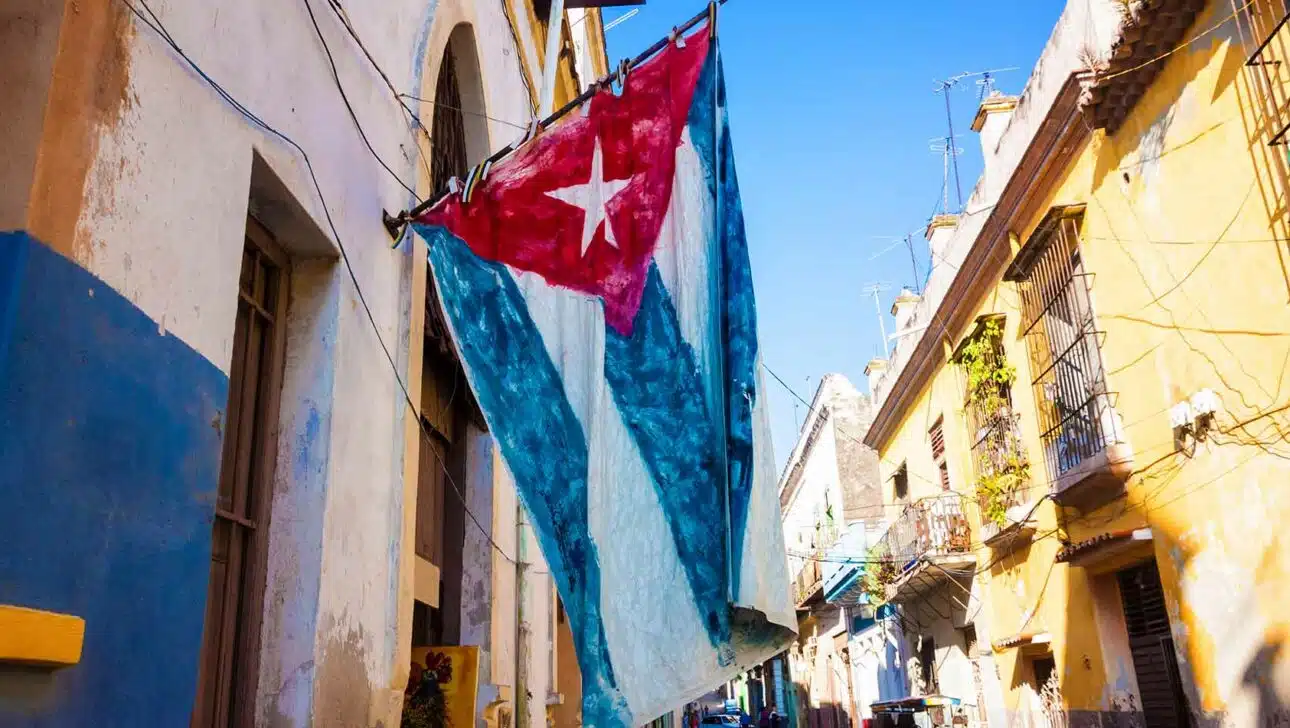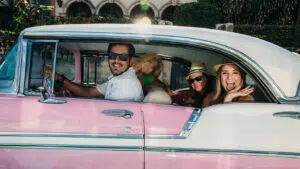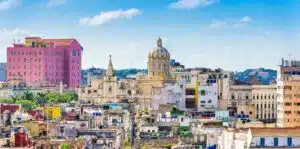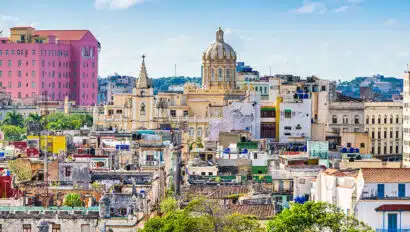My hips are clearly not Cuban. Just ask Margo, my 80-something salsa partner in Havana’s Muraleando district. Our group had been in Cuba for less than two hours when I met her during Classic Journeys People-to-People Cuba tour. Already, we had roamed streets where surreal murals by local artists coat every wall. Our guide, Jorge Frank, signaled us into the small community center where we were met by a clutch of women, men and kids. In the corner, a 5-man salsa band swung into action. “A folkloric presentation,” you might have thought. And oh, would you have been wrong.
As it turned out, our group was a welcome excuse for a dance party. Margo honed in on me from across a crowded room. I couldn’t refuse her extended hand. It had a noticeable tremor, and I saw what might have been a cataract haze on one eye. “I’ll go easy on her,” I thought. But Margo still had the moves—many more, in fact, than I’ll ever have—and a sunny smile that was a true gift. In all of the countless countries where I’ve traveled, I’ve never been pulled into local life faster, with less restraint and more hospitality than that day in Havana. It’s not what I expected.
In a nutshell, Margo represents what I quickly came to think of as the “Cuban contradiction.” The island and its people are timeworn. On many Havana streets, grand colonial buildings are roofless and decrepit. Yet, just as you start to feel the weight of that history, a ruby red, tail-finned Caddy from the ‘50s swaggers around the corner. Top down, the driver throws you a wave and a grin, taps the horn, and you realize there’s an undercurrent here that somehow hasn’t dried up in the 54 years since the revolution. Whether it’s happiness…or the refusal to be unhappy, I still can’t say.
Certainly, I had plenty of chances to consider that conundrum in my face-to-face meetings with Cubans. On our seven-day educational tour of Cuba, we interacted with no one but locals. Other visitors were on our official charter flight from Miami, but we never laid eyes on them again. We met with worshipers in an afro-Caribbean Santería church . On a walk in the beautiful Viñales Valley, we talked agriculture and government policy with a tobacco farmer while he rolled cigars. At several dinners, we sat down to fine meals in paladares, some of the rare privately owned businesses in Cuba. We had great conversations with Ida, a resident of Las Terrazas sustainable community in the Sierra del Rosario Biosphere Reserve. She’s never been more than two hours from home. The traveler in me could barely reconcile the size of her spirit given the small scale of her world.
We came to meet Cubanos and try to understand their lives. That’s a tall order in a country where a physician earns the equivalent of $40 or so per month. The rectangular bulge in a pants pocket is a ration book, not a cellphone. About 77% of the people work for the government, and only 5-10% own a car. And a gallon of milk costs something like $13.
“Should I go to Cuba?” is one of the questions I hear more than any other these days. And I answer it with questions of my own. Do you value a trip that opens your mind and changes the way you see the world? Are you truly curious about being immersed in the realities of life on this island that’s figured so strongly in our lives for so long? Then, yes. You must go.
Cuba challenged me like no place else I’ve ever visited. Experiencing it firsthand changed me in ways vastly out of proportion to the length of the trip or the size of the country. And that is just the kind of contradiction for which we travelers spend our lives looking.
Original article in the Huffington Post can be read here: https://www.huffpost.com/entry/the-cuban-contradiction_b_4741177.
For more information on Classic Journeys 8-day educational People-to-People Cuba tours, visit classicj.wpengine.com/cuba or call 1-800-200-3887 to speak with one of our Cuba travel experts.






